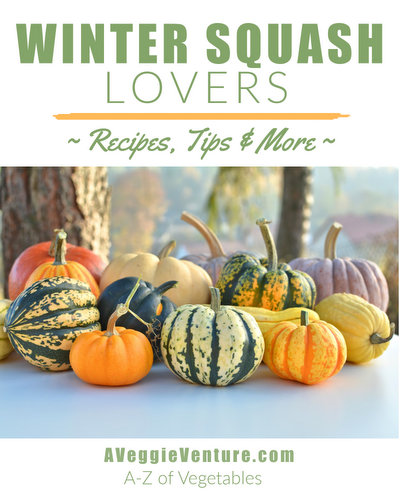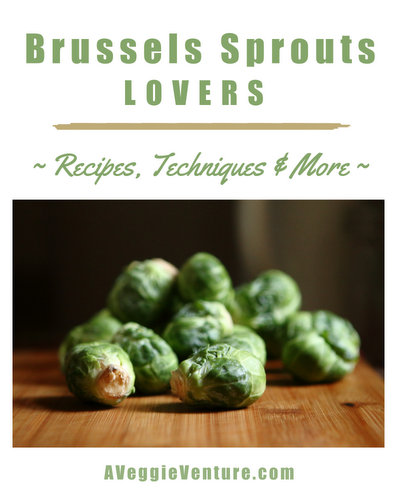Jubilee Greens ♥
How to Sauté Leafy Greens Like Spinach, Chard, Kale & More
Real Food, Fast & Casual. Just Greens Plus a Handful of Pantry Ingredients! Year-Round Kitchen Staple. Budget Friendly. Weeknight Easy, Weekend Special. Low Carb. Low Fat. Weight Watchers Friendly. Not just vegan, Vegan Done Real. Naturally Gluten Free. Whole30 Friendly.
"I Just Have to Have My Greens"
Are greens a necessity in your life? They sure haven't been in mine. Sure, you'll find fresh spinach or arugula in my fridge but really, those are destined for salads, not for cooking.So I was struck when my friend Margie explained her decision to shop for groceries herself, even last spring when many began turning to online orders, grocery delivery and curbside pickup. "I have to have my greens," she said, her voice expressing an urgency akin to less life-giving addictions.
What was I missing???
I soon realized that aside from the wonderful Greek Greens, the method I've advocated for 15+ years to meal prep short-lived leafy greens for eating later, I really didn't have just one reliable way to quickly cook a big pile of fresh greens, whether chard or spinach or kale or beet greens or Asian greens like gai lan or ... or ... or ...
Enter Jubilee Greens
By chance, Jubilee: Recipes from Two Centuries of African American Cooking by Toni Tipton-Martin landed on my doorstep a few days later.And there, right there – albeit buried on the verrrrrrrry last page of a long chapter titled "A Little Bit of This, A Little Bit of That" – was a recipe for "Sautéed Greens".
So I cooked a skillet of mustard greens, curly kale and beet greens. And then a mix of spinach and turnip greens. And then dinosaur kale and chard. And then more kale. And then chard – oh my, the goodness that is chard – and more chard. Along the way, I got side-tracked by Slow-Cooked Greens & Smoked Turkey, so good, as promised by the woman who shared her recipe in a doctor's office waiting area, "you'll want to eat the pot". But for almost a year now, one week after next, I cook up a quick skillet of greens, a side for dinner, sure, but also ...
Sauté vs Braise
Technically, Jubilee Greens are "braised" with a little water that keeps the greens moist and cooks them through without turning to mush. But for most of us, the distinction between the sauté and braise cooking techniques are lost. Here's the difference.Sauté Sautéed greens cook directly with little more than a small amount of oil and heat. That makes sautéeing best for tender greens which can cook quickly, just a couple of minutes. In common parlance, you might call this "frying".
Braise Braised greens get a boost from a splash of liquid that both directly cooks and steams the plants. The term "braise" is not widely used even if the technique itself is common. If you've ever followed a recipe that specifies adding water or stock or another liquid "halfway up the sides" of a roast, say, you were braising!
Why "Jubilee" Greens?
This one's for the word dancers among us. :0#1 I want to pay homage to the cookbook which finally really turned me onto greens, someone who now cooks greens almost without thinking, as readily as she fries an egg or cooks oatmeal in the microwave.
#2 One definition of the word jubilee is "rejoicing". And I'm telling you, good greens are definitely cause for celebration. Isn't it a joy that the dark leafy greens that are so good for us can taste so good?!
#3 "How to Quickly Cook Spinach, Chard, Kale & Other Leafy Greens In a Skillet With a Splash of Vinegar and a Touch of Sweetness Until They're Absolutely Delicious" is a little long, don't you think?
Jubilee Greens it is!
Ingredients: Just Greens + A Few Pantry Ingredients
Like all my recipes, every ingredient serves a purpose. Each one matters. Each one contributes to the overall dish. It's not that an ingredient can't be substituted by something else but when choosing the substitute, it's important to understand why the original ingredient was present in the first place.Greens This recipe works well with everything except (1) "baby" greens which are too tender for cooking and are best eaten raw and (2) very heavy, sturdy like collards and (3) extra-mature greens (read "tough"). Everything else is fair game, more detail below.
A Little Oil Some greens recipes load up on fat. Not here, I stick with A Veggie Venture's usual 1 tablespoon oil:1 pound vegetables. It's plenty. Do stick with oil, however, which has a lower smoke point than butter. Could you use bacon fat? Sure. Or if you'd like a little extra butter flavor, stir in a spoonful at the end versus using the butter to sauté the greens.
A Little Onion, Maybe a Little Pepper, Definitely Some Garlic Onion is important, a red bell pepper can add color or a poblano can add a touch of smoky heat. You won't go wrong with some thin-sliced or grated garlic. (Ever grate garlic on a microplane? Brilliant.)
Water Most recipe writers leave water off the ingredient list but not me: I want you to be able to quickly scan my recipes to make sure nothing's been forgotten. And you definitely don't want to forget the water because it's key to cooking the greens.
Red Pepper Flakes or Cayenne Pepper Just a touch, for a tiny bit of zing to contrast with the greens' astringency, that bitterness people who love greens crave so much. Curious? See What Are Bitter Greens?, again, great background information for anyone who's intrigued about cooking greens.
A Splash of Vinegar Don't skip that last, final splash of vinegar, the acid that will brighten the greens into something spectacular. It doesn't have to be vinegar, it could be another acid like lemon juice. But really, isn't vinegar just so quick and easy?!
A Squirt of Something Sweet You don't need much, maybe a teaspoon but oh, a taste of honey or maple syrup (for vegan) or sorghum syrup or even a tiny taste of sugar will move the sautéed greens to another level. The greens won't taste sweet, they'll just taste a tad better.
Salt & Pepper Season to taste, of course, but don't be afraid of the salt. If you're cooking your own food at home, you're already consuming way-way-WAY less sodium than people who consume prepared food or eat out.
Details Matter: Let's Get More Specific About the Greens
Anyone who tells you a recipe can be used for "any" green is just plain wrong.I discuss the difference between salad greens and cooking greens (and the very relevant topic of tender greens vs sturdy, hearty greens) in this page that features all my Leafy Greens recipes, just one vegetable in the famous (and just updated!) A-Z of Vegetables.
But let me focus on Jubilee Greens in particular, where the goal is to quickly cook greens in a little oil in a skillet on the stove, aided by a bit of water that both creates steam and directly cooks even sturdy greens.
First, here are the greens which aren't recommended for sautéeing.
NOT RECOMMENDED
"Baby" Greens This recipe isn't well-suited to most tender, baby greens we use for salads, say. That said, the tubs of organic "baby" spinach we find at Sam's work really well: it's a great product, plenty tender for salads, at the same time plenty sturdy for light cooking.
Very Sturdy, Older & Mature Greens This recipe isn't well-suited to heavy greens like collards (instead use Braised Collard Greens) and any older, tougher, more wrangly looking greens (here I'd recommend Slow-Cooked Greens & Smoked Turkey).
Kohlrabi Greens Maybe it's personal preference but I find kohlrabi greens just too bitter and too ... skunky, I guess I'd call it.
Frozen Greens? You know, I don't know! I think I'd save these for something else. Anyone else have a different idea???
RECOMMENDED
Fresh Clean-Em-Yourself Greens For flavor, for freshness there's no matching good greens straight from the garden, the farmers market, your CSA, even the grocery store, whether kale, mustard greens, turnip greens, beet greens, chard and even specialty greens like the wonderful tatsoi.
The downside, however, is the time needed to clean the greens. Do take time to clean them really well, unless you're hankering for grit. Need tips on cleaning fresh leafy greens? The Leafy Greens recipes is a motherlode of practical information. The one exception? Mostly, greens from Whole Foods need only a quick rinse, little more.
My Personal Favorite Chard, definitely chard. Maybe it's the bright colors in the stems and ribs? Maybe it's that the leaves are reliably tender but not too tender? For anyone cooking greens for the first time, I recommend chard.
I also love Jubilee Greens made with kale, especially with a little cream cooked in near the end.
Bags of Cleaned Greens These are a total time-saver! That's because most of the greens we purchase (and certainly those we grow) carry a gritty residue that can require soaking, rinsing, actual washing. Some bags can be stem-heavy (I'm looking at you, Trader Joe's, though a recent bag of kale was wonderful) which is important because the stems do take longer to cook and if you have a bag of pre-washed greens, well, you're definitely not going to be happy about snipping off heavy stems small bits.
How to Make Jubilee Greens
The detailed recipe is written in traditional recipe form below but here are the highlights in four easy steps. You can do this!You Might Wonder Be Wondering ...
Have another question? Ask away, I'll do my best to answer!Is It Hard to Cook Fresh Greens Jubilee-Style? No! Despite the length of this post, sautéing greens is simple. In fact, my first advice is to just get the gist of the recipe and go for it. Yes, just cook a skilletful. If you like them, cook another, you probably won't even need to follow a "recipe" again. In fact, one of the reasons I'm offering so much detail here is to help guide your own judgment, something that's more essential here than in many if not most recipes. What makes this technique so valuable is its flexibility: which means there's no accounting for all the different types of greens, their relative tenderness or sturdiness, how long they'll take to become tender, how much seasoning you like, etc.
What Is the Best Skillet to Use? Choose a skillet that's wide (thus plenty of surface area) with at least some depth (to allow room for the greens before they cook down) preferably with a lid. I've winnowed my own skillet choices down to just one, this large non-stick everyday cooking pan with a glass lid (affiliate link) from Cuisinart that's going on three years of daily use now. That glass lid is especially useful for cooking eggs, say, and now greens. It's a real workhorse, easy to clean by hand, easy to store.
What About the Pesky Stems? For me, only spinach stems are actually pesky and even then, mostly in their stringy appearance after cooking. About 100% of the time, okay maybe 99.8%, I leave the stems be. For greens like chard and kale, say, it's quite simple to cut off the stems and slice out any interior heavy ribs. These take longer to cook so go into the skillet with the onion. I really love the stems, they add a great texture and even taste difference. Some stems are even quite pretty – beet greens and chard in particular.
MOST USEFUL RECIPE of 2021?
Allow me to go out on a limb here. It's early in the year, of course, but I predict that Jubilee Greens is a good candidate for 2021's top recipe, earning a place among A Veggie Venture's going-on 16 years of Favorite Vegetable Recipes. Would it have ranked high back in 2005 and 2006? You bet. Check out 15 Favorite Vegetable Recipes for 15+ Years to see if you agree.
Allow me to go out on a limb here. It's early in the year, of course, but I predict that Jubilee Greens is a good candidate for 2021's top recipe, earning a place among A Veggie Venture's going-on 16 years of Favorite Vegetable Recipes. Would it have ranked high back in 2005 and 2006? You bet. Check out 15 Favorite Vegetable Recipes for 15+ Years to see if you agree.
BOOKMARK! PIN! SHARE!
How do you save and share favorite recipes? recipes that fit your personal cooking style? a particular recipe your mom or daughter or best friend would just love? If this recipe hits the mark, go ahead, save and share! I'd be honored ...
RECIPE for JUBILEE GREENS
Hands-on time: 5 minutes (if greens are prepped ahead of time) or 20 minutes (if not)
Time to table: 15 minutes or 35 minutes
Serves 1 to many
Time to table: 15 minutes or 35 minutes
Serves 1 to many
I'm writing this recipe per pound (450g) of greens, making it easy for cooks to scale the recipe up or down. A pound of greens takes up a ton of room in the fridge but cooks down to about two cups, easily 4 generous servings.
1 pound (450g) fresh, dark leafy greens
1 tablespoon olive oil
1/2 medium onion, sliced thin vertically or diced
Stems & Ribs from the greens, chopped
2 cloves garlic, sliced thin
Clean Greens
Salt & Pepper to taste
1/2 cup water
1 tablespoon apple cider vinegar or another vinegar
1 tablespoon sweetness (maple syrup, honey or sorghum, for example, even a teaspoon of sugar)
Sprinkle red pepper flakes, optional
CLEAN THE GREENS If needed wash the greens well, removing any grit from all the creases, crevices and crevasses in the leaves. Separate the stems and heavy interior ribs from the leaves, chop these into bite-size pieces and set aside. Stack the leaves one atop of the other, cut into bite-size squares.
SKILLET In a large skillet, heat the olive oil on MEDIUM HEAT until shimmery. Stir in the onion, Stems and garlic, cook just until beginning to turn soft, just a couple of minutes. Stir in about half the Clean Greens, turning to coat with fat. Once these cook down a bit, stir in the remainder of the Clean Greens. Season with salt and pepper.
Add the water, cover the skillet and let cook, stirring only occasionally, until the greens are almost fully cooked and the water has cooked off; the specific timing will vary a lot, from a couple of minutes to 10-15 minutes, the longer the time, the more likely it is you may need to add more water, go easy though, maybe a tablespoon at a time.
Once the greens are almost fully cooked, stir in the vinegar, sweetener and red pepper flakes. Taste to gauge doneness and need for additional salt and pepper. If there's still water in the skillet, leave the lid off so the water will evaporate as the greens finish, you might even want to add a blast of MEDIUM HIGH heat. Keep tasting small bites, deciding on whether to add more vinegar, sweetener, seasoning and testing for doneness.
Once done, once tasting delicious, dig in! You can also "hold" the greens on the stove for a good 15 to 20 minutes while the rest of the meal gets finished, just turn the heat as low as it'll go.
MAKE-AHEAD Best straight from the skillet but we never mind the leftovers: I'm happy with them cold with a little cottage cheese for lunch, my husband not so much.
VARIATIONS More ingredients? I do occasionally add bell pepper for color. Apple is an unexpected disappointment. Once I stirred in some coconut milk and hoisin sauce near the end, very good. The stems of beet greens are especially pretty with red onion and beet greens supplemented with other greens (it's hard to get a whole pound of beet greens).
ALANNA's TIPS & KITCHEN NOTES
Still Hungry?
NEVER MISS A RECIPE!
For "home delivery" of new recipes from A Veggie Venture, sign up here. Once you do, new recipes will be automatically delivered straight to your e-mail In Box.More Favorite Recipes for Leafy Greens
~ Vegetables 101: What Are Bitter Greens? ~~ Vegetables 101: How to Revive Fresh Greens ~
~ Asian Greens ~
~ Quick "Massaged" Kale Salad ~
~ Braised Collard Greens ~
~ more recipes for leafy greens ~
from A Veggie Venture
~ Slow-Cooked Greens & Smoked Turkey ~
~ Greens & Grits ~
~ Shrimp with Tomatoes, Spinach & Feta ~
~ more leafy green recipes ~
from Kitchen Parade
Seasonal Eating: Late Winter Across the Years
Bean & Lacinato Kale SoupLooking for healthy new ways to cook vegetables? A Veggie Venture is home to hundreds of super-organized quick, easy and healthful vegetable recipes and the famous asparagus-to-zucchini Alphabet of Vegetables. Join "veggie evangelist" Alanna Kellogg to explore the exciting world of common and not-so-common vegetables, seasonal to staples, savory to sweet, salads to sides, soups to supper, simple to special.
© Copyright Kitchen Parade
2021
© Copyright Kitchen Parade
2021







This comment has been removed by a blog administrator.
ReplyDeleteThis comment has been removed by a blog administrator.
ReplyDeleteThis comment has been removed by a blog administrator.
ReplyDelete